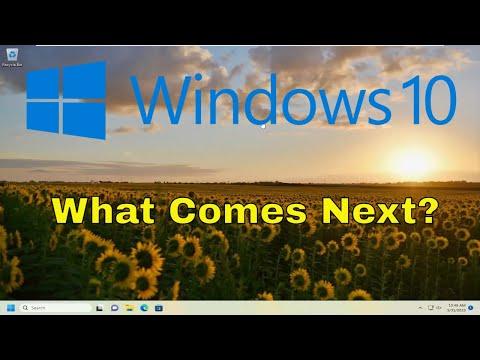I remember the first time I heard that Windows 10 support would be ending in 2025. I was in the middle of an important project, and the thought of my reliable operating system becoming obsolete left me feeling uneasy. As I delved into the details, it became clear that I had to prepare for a significant transition.
At first, I wasn’t entirely sure what this meant for me. I had grown accustomed to Windows 10’s features and stability. The idea of moving away from something so familiar was daunting. I could envision myself grappling with new software and potential compatibility issues. The ultimate question was: what would happen when Windows 10 support ended, and how could I ensure a smooth transition?
I decided to research thoroughly to understand the implications. I discovered that once Windows 10 support ends, Microsoft will no longer provide updates, including security patches. This means that my computer would become increasingly vulnerable to malware and other security threats. Without these updates, my system would not be protected against newly discovered vulnerabilities, making it a prime target for cyberattacks.
Furthermore, I learned that technical support for Windows 10 would cease. This was particularly concerning because I often relied on Microsoft’s customer service for troubleshooting. Without this support, resolving technical issues would be solely dependent on my own problem-solving skills or third-party help. The thought of handling complex problems without official guidance was unsettling.
Another significant factor was software compatibility. As Windows 10 support ends, software developers would shift their focus to newer operating systems. This means that over time, programs and applications I frequently used might not receive updates or new versions compatible with Windows 10. This would lead to potential performance issues or, worse, the inability to run critical applications essential for my work.
Faced with these potential issues, I realized that planning for the end of Windows 10 support was crucial. I needed to consider my options carefully to avoid being caught off guard. The first step in my strategy was to explore alternative operating systems. Windows 11, Microsoft’s latest version, quickly became a prominent candidate. It offered enhanced features, better security, and improved performance, which were all appealing.
Transitioning to Windows 11 was not as straightforward as I initially hoped. The new operating system required specific hardware specifications, which meant that my current computer might not meet the requirements. This was a significant concern because upgrading or purchasing new hardware could be a substantial financial investment. I had to evaluate whether the benefits of Windows 11 justified the potential costs involved.
To address this, I began by assessing my hardware’s compatibility with Windows 11. Microsoft provided a tool called the PC Health Check, which allowed me to determine if my current system met the requirements. When I ran the tool, I was relieved to find that my hardware was compatible. This meant that I could potentially upgrade to Windows 11 without needing a new machine.
Next, I focused on preparing for the upgrade. I made sure to back up all my important files and documents. This step was crucial because the upgrade process could potentially lead to data loss if anything went wrong. I also researched how to perform a clean installation of Windows 11, which involved creating a bootable USB drive and ensuring that I had all necessary drivers and software ready for reinstallation.
As I prepared for the upgrade, I also explored other options, such as using a different operating system or even considering a transition to macOS or Linux. While Windows 11 seemed to be the most straightforward path, I wanted to be thorough in my evaluation. Each alternative came with its own set of advantages and challenges, and I needed to be prepared for any potential pitfalls.
In the end, I decided to proceed with upgrading to Windows 11. The new operating system promised improved security, a modern interface, and enhanced features that aligned with my needs. I followed the necessary steps to perform the upgrade and, fortunately, encountered no major issues. The transition was smooth, and I was relieved to have taken proactive steps before Windows 10 support ended.
As I continued using Windows 11, I found that the new features and improvements significantly enhanced my productivity and overall experience. The upgrade had been worth the effort and investment. I felt reassured knowing that I was protected by the latest security updates and had access to ongoing support from Microsoft.
Reflecting on the experience, I realized the importance of planning for the end of support for any operating system. By staying informed and preparing ahead of time, I had navigated the transition successfully. It was a valuable lesson in adapting to technological changes and ensuring that I remained up-to-date with the tools and systems essential for my work and personal use.
